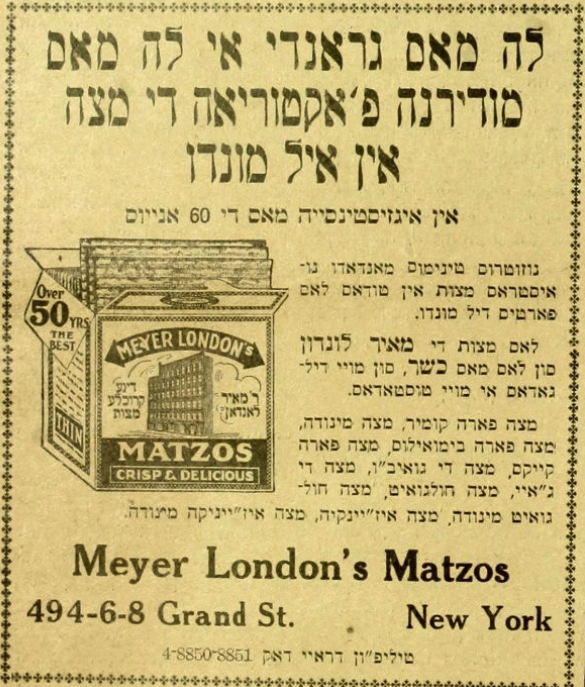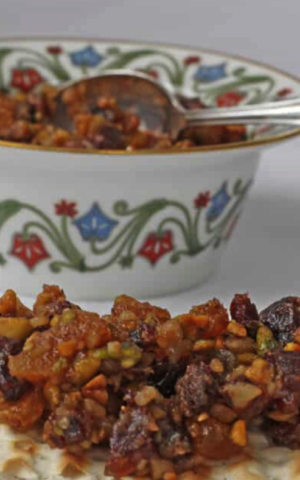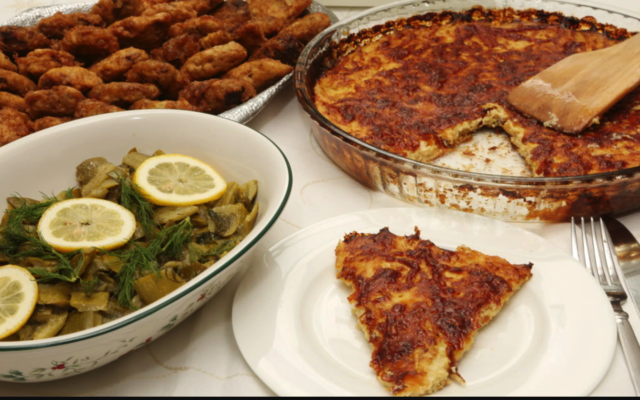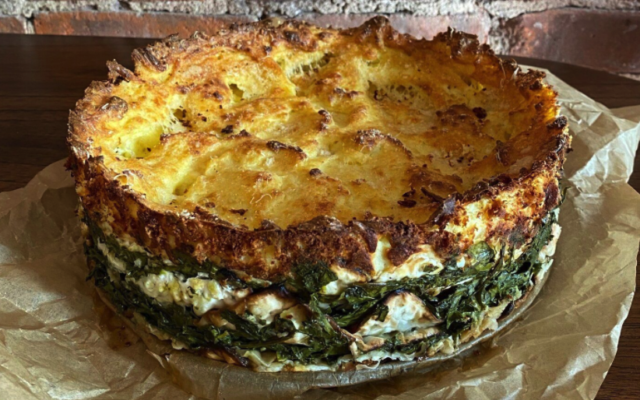The Unique Experience of a Sephardic Seder
Ladino or Judeo-Spanish was the preferred language for Jews throughout the Mediterranean region, southern Europe and Morocco.
Passover, as Albert Barrocas and his sister Rebeca recall it from their childhood in Cuba, was shaped by their parents’ Sephardic Turkish heritage. Both of his parents’ families were originally from Istanbul and Izmir in the old Ottoman Empire, which ruled large areas of the Middle East for 400 years until its collapse following defeat in World War I.
Barrocas recalls there being only nine Jewish families in the small town about 30 miles southeast of Havana, which included his family and the families of his two uncles. Even though they were a small community, they were closely knit and paid attention to the tumultuous years following World War II. Mostly, he remembers one Passover even though he was only six at the time.
“That was 1948,” he says. “We were going to Havana, where my father was in the hospital. And as we were going toward the bus station, one of the Ashkenazi family members stopped us on the street and told us the news they had just heard that Israel just declared its independence.”

Their seder table was filled with the rich and diverse cuisine of Turkish Jews. There were complex vegetable and egg casseroles, meat and vegetable patties and even matzah-layered meat and vegetable pies that was worlds away from the standard Ashkenazi fare of Eastern Europe.
Barrocas, who was a surgeon for many years, is particularly fond of a Passover dish called Megina or Meat Quijado. It was reprinted in the Sephardic cookbook of Congregation Or VeShalom, which still has many members who descend from Turkish and Greek immigrants to Atlanta.
It’s similar to the Greek moussaka but includes matzah that has been dipped in beaten eggs, covered by ground beef and eggs, then topped off with mashed potatoes and mixed with two more beaten eggs. It’s baked and then napped with chicken broth to serve.

Because Sephardim in the Mediterranean region and the Middle East did not accept the Ashkenazi restrictions on kitniyot, they were free to eat rice and legumes such as chickpeas, beans and lentils.
Sephardic seders were also distinguished by unique recipes for charoset, which symbolizes the mortar that Jewish slaves in Egypt used to build pyramids and other structures for the Pharaohs. Sephardic recipes often call for a whole orange and peel.
Dates, particularly the soft Medjool variety, are also added, along with spices such as ginger and allspice. Italian Jews sometimes add chestnuts in place of the more traditional walnuts. Finally, some cook the mixture down to a smoother, more spreadable condiment.
Barrocas’s older sister, Rebeca, who moved from Cuba in the mid-’50s, when she was 17, recalls one more important difference in the Sephardic seders she attended as a child: the abundant use of Ladino, or Judeo-Spanish. Knowing Ladino made it easy for her parents and grandparents to pick up their lives when they emigrated to Spanish-speaking Cuba in the early 20th century. Rebeca remembers that, when she first moved to Atlanta in 1954, Ladino was still in daily use.
“My mother had a regular card game and she had ladies, her cousins, her sister, her sister-in-law and all those that got together,” she said. “She lived with me all the time and then they were speaking Ladino. I’m in Orlando now, but I don’t know anybody that speaks Ladino.”
Albert Barrocas keeps the memory of Ladino alive at the seder by using a Haggadah that is printed in both Ladino and English, as well as by the songs his four children and their families sing. One of his favorites, which he distributes at the end of the seder ritual, is a Judeo-Spanish version of “Echad Mi Yodea” in Hebrew, “Who Knows One.”

The Ladino version is “Quien Supiessey Entendiesse,” a numbers song that moves from the belief in one G-d to the 13 Attributes of G-d’s Mercy with references to matriarchs and patriarchs and important Jewish texts and lifestyle events. There are also the familiar verses of the “Chad Gadya,” or “One Little Goat,” which in Ladino is “Un Kavretiko.”
While Turkey was an important center of Jewish life for centuries, it was only one of the Sephardic communities that stretched from Bulgaria to Morocco and India. Equally important are the complementary Mizrachi traditions that have taken root in Israel and the Romaniotes, a Greek-speaking ethnic Jewish community native to the Eastern Mediterranean.
All are a reminder of the richness and diversity of Jewish life as brought into focus at this poignant time of the year.
- Passover
- Pesach
- Seder
- Bob Bahr
- Sephardic
- Albert Barrocas
- Rebeca Barrocas
- Cuba
- Turkey
- Istanbul
- Izmir
- Ottoman Empire
- Middle East
- World War I
- Havana
- World War II
- WWI
- WWII
- Ashkenazi
- Israel
- casseroles
- Megina
- Meat Quijado
- Congregation Or VeShalom
- Kitniyot
- Greece
- charoset
- Egypt
- Pharoah
- Ladino
- Echad Mi Yodea
- Quien Supiessey Entendiesse
- Chad Gadya
- Un Kavretiko
- 13 Attributes of G-d’s Mercy
- Mizrachi
- Romaniotes
- bulgaria
- Morocco




comments